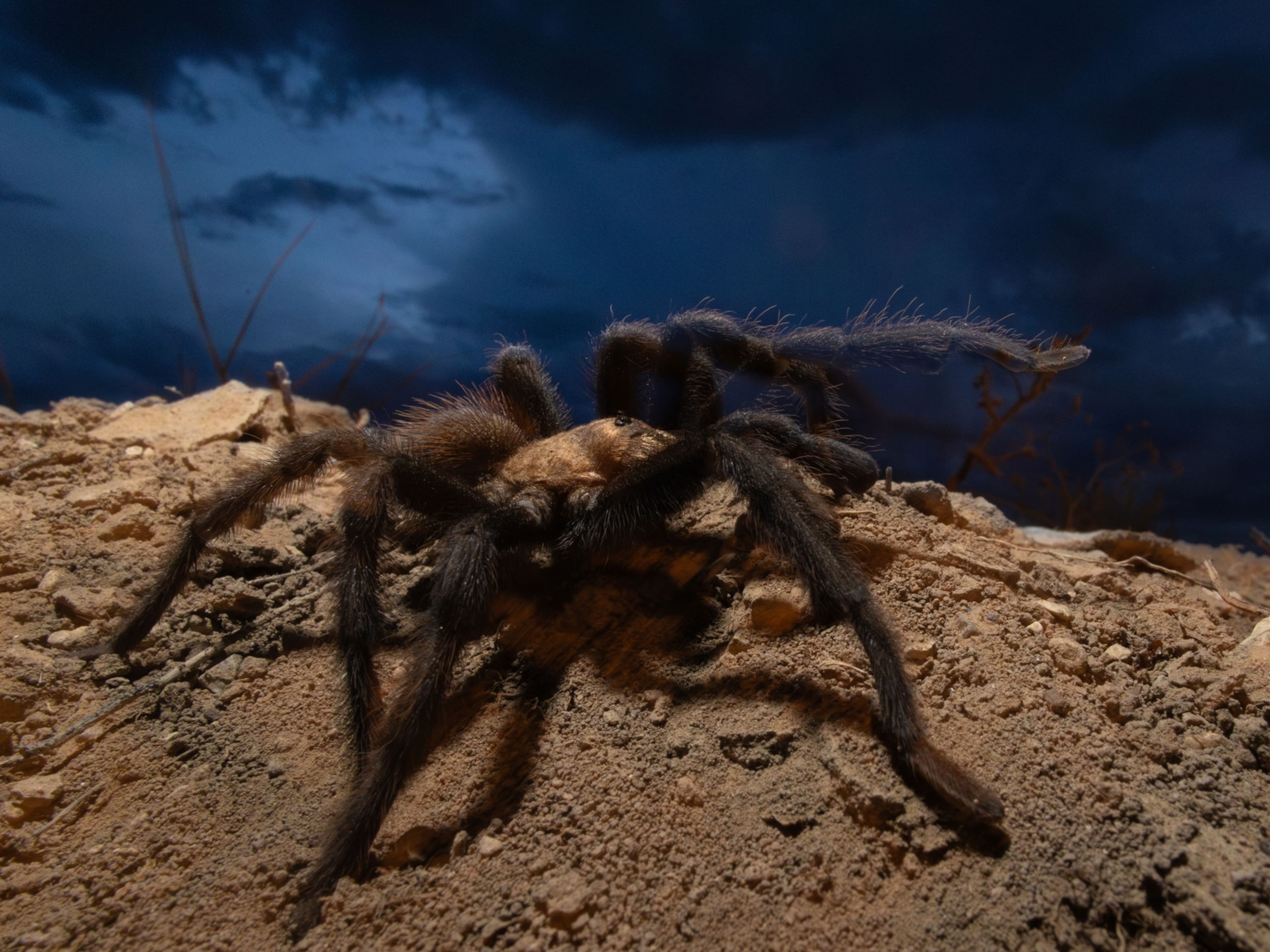
Biggest Fossil Spider Found
The 165-million-year-old species is a relative of today's large web weavers.
The biggest known fossil spider has been found in China, a new study says.
Measuring nearly 1 inch (2.5 centimeters) in length, the 165-million-year-old fossil was uncovered in 2005 by farmers in Inner Mongolia (see map)—a region teeming with fossils from the middle Jurassic period.
"Compared to all other spider fossils, this one is huge," said study co-author ChungKun Shih, a visiting professor at Capital Normal University in Beijing, China.
(Related blog post: "Seven of the Biggest Beasts of All Time.")
"When I first saw it, I immediately realized that it was very unique not only because of its size, but also because the preservation was excellent," Shih said.
Fine volcanic ash preserved the specimen's exquisite features, such as mouthparts and hairlike structures that covered its legs, according to the study.
These features allowed scientists to classify it as Nephila jurassica, a new species in the genus Nephila—a surviving group of spiders that weave 5-foot (1.5-meter) webs of strong, golden silk. Among the largest web-weaving spiders today, these creatures can reach lengths of up to 2 inches (5 centimeters).
(Related: "Largest Web-Spinning Spider Found.")
Biggest Fossil Spider Drove Insect Evolution?
The fossil spider shows that Nephila is the spider genus that's been around the longest. The rare discovery pushes back the origin of the genus by about 130 million years. (See a prehistoric time line.)
Because modern-day Nephila spiders thrive in tropical and subtropical habitats, the discovery also provides evidence that northeastern China was warmer and more humid during the Jurassic than it is now.
Likewise, the find may mean that such spiders—capable of catching large bugs with their extensive webs—played an important role in the evolution of insects. (See pictures of the world's biggest, strongest spider webs found recently in Madagascar.)
"If insects wanted to survive, they had to figure out a way to avoid being caught by the web," Shih said.
The biggest fossil spider was described April 19 in Biology Letters.





